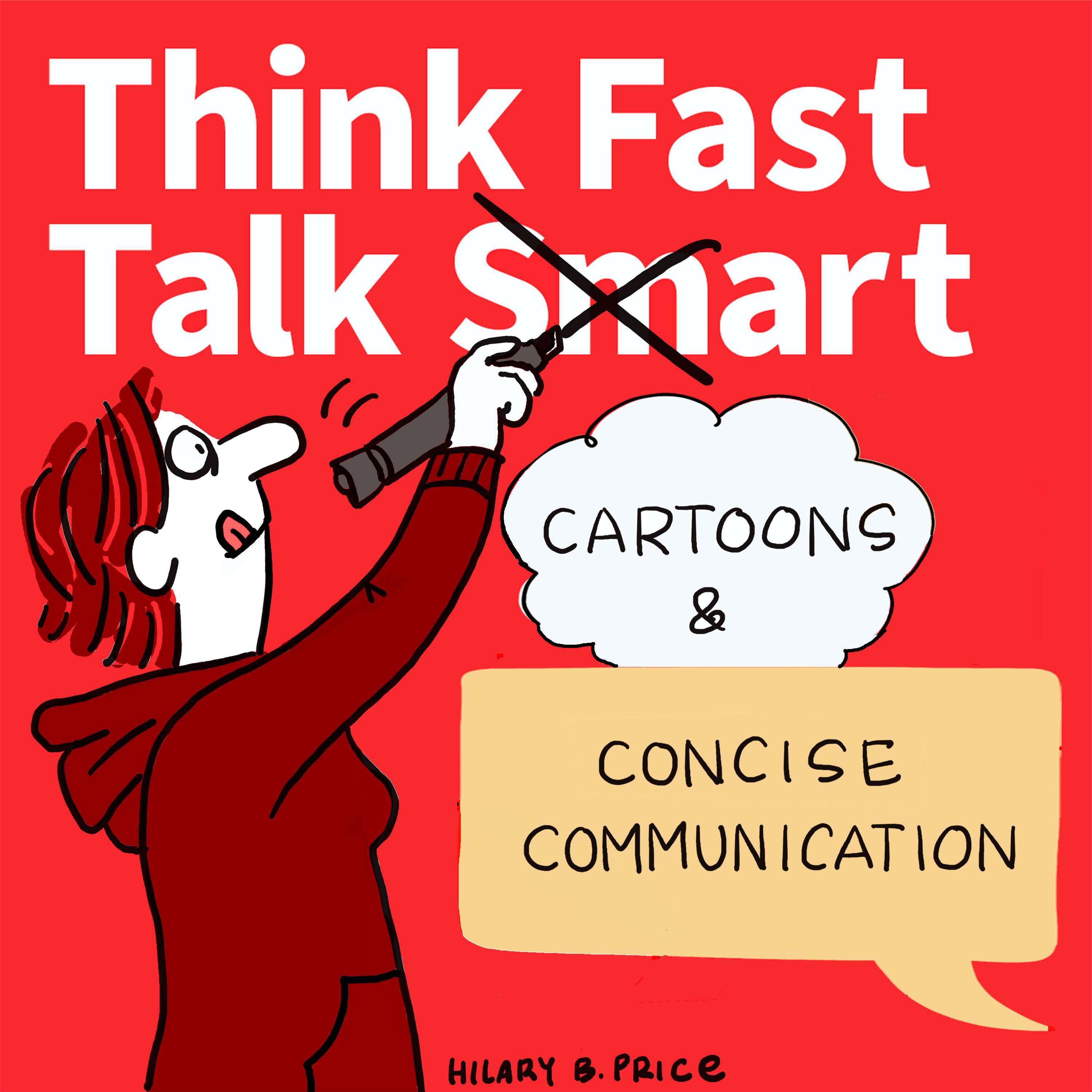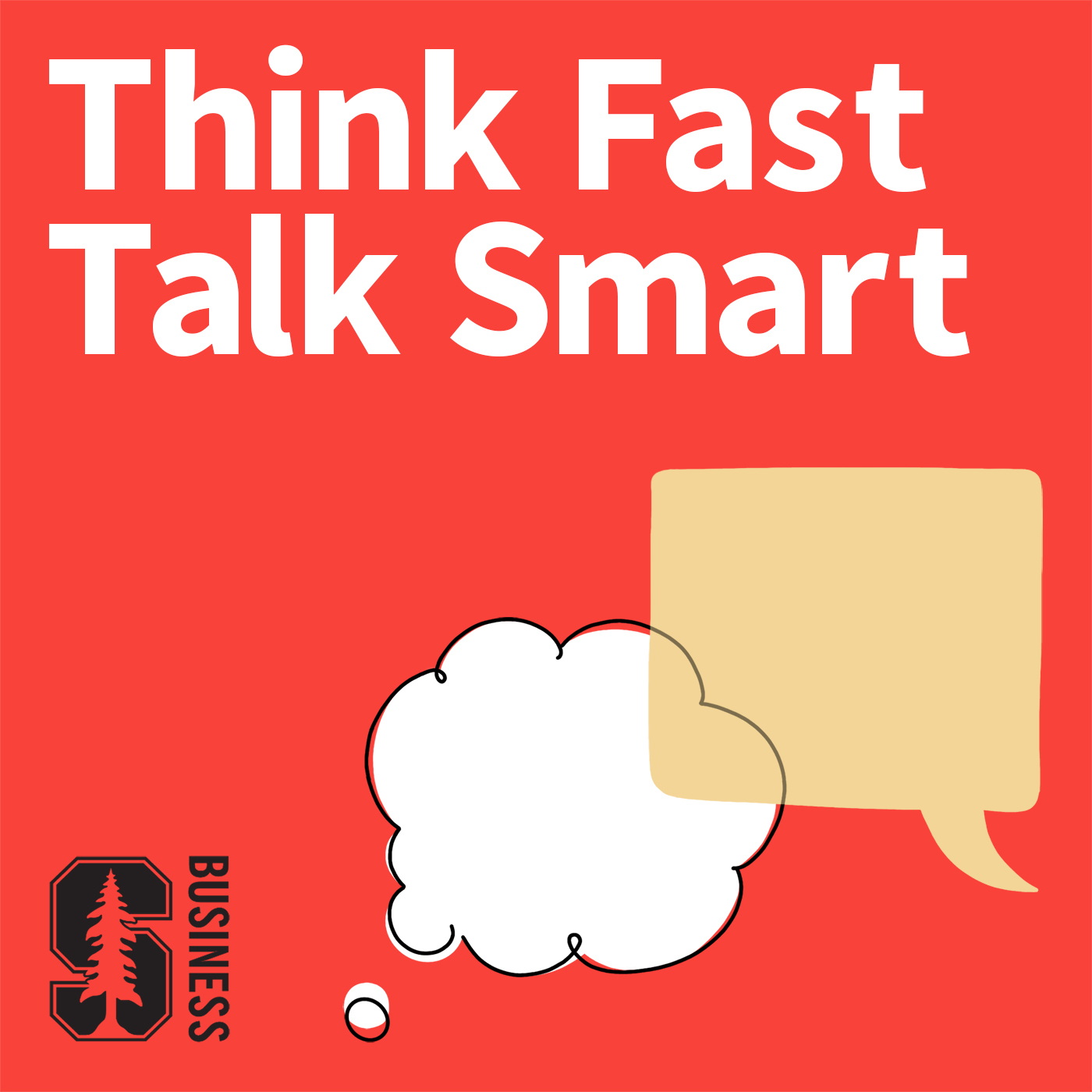
Between the Lines: In Storytelling, Simplify to Amplify - Premium Sampler

Think Fast, Talk Smart: Communication Techniques
Deep Dive
Why is it important to start a story at the action moment or right before it?
Starting at the action moment or just before it eliminates unnecessary introductions and keeps the story engaging. It allows the audience to immediately connect with the narrative, making it more impactful.
How does Hilary Price use the reader's past experience to enhance her storytelling?
Price relies on cultural cliches and common experiences that readers bring to the table. By not spoon-feeding information, she leaves room for the audience to co-create meaning, making the storytelling interactive and engaging.
What is the significance of the punchline in storytelling according to Hilary Price?
The punchline is the climax where the story's impact is strongest. It's the moment of revelation or humor that the audience builds up to, and it should be the strongest element to leave a lasting impression.
How does Hilary Price approach the visual elements in her comic strips?
Price starts with the joke and then considers the visual elements. She iteratively refines the drawings to include only essential elements, ensuring that the visuals are simple yet amplify the message without overcomplicating the narrative.
What advice does Hilary Price give about crafting a story with stakes, suspense, and surprise?
Price advises that a good story must have change, surprise, and stakes. She references Matthew Dicks' definition of a story as 'I used to think one thing, then some stuff happened and I think another.' This emphasizes the importance of transformation and unexpected elements in storytelling.
Why does Hilary Price choose to name her comic strip 'Rhymes with Orange'?
The title 'Rhymes with Orange' reflects the uniqueness and unconventional perspective of the comic strip. It also signifies that there is no real word that rhymes with 'orange,' hinting at the distinct and original content readers can expect.
How does Hilary Price's process of simplifying and amplifying apply to general communication?
Price's process involves stripping away unnecessary elements to focus on the core message. This approach can be applied to any form of communication by ensuring that the message is clear, concise, and impactful, leaving no room for distractions.
What role do visuals play in Hilary Price's storytelling process?
Visuals in Price's process come last and are refined iteratively to ensure they are essential and amplify the message. This approach helps in creating a balance where visuals support the narrative without overwhelming it.
How does Hilary Price ensure her comic strips are culturally relevant?
Price uses cultural references and common knowledge that readers are familiar with, allowing them to fill in the gaps and co-create the story. This makes the strips culturally relevant and engaging for a broad audience.
What is the 'justification game' Hilary Price plays to generate gags?
The 'justification game' involves taking two disparate ideas and asking 'what if?' to find a connection that disrupts the usual expectations. This creative process helps in generating unexpected and humorous scenarios.
- A good story must have change, surprise, and stakes.
- Matthew Dicks' definition of a story: 'I used to think one thing, then some stuff happened and I think another.'
- Cartoons rely on cultural history and common knowledge to create surprise and engagement.
Shownotes Transcript
Visit fastersmarter.io/premium) to become a Premium subscriber.
"Start with the action moment or right before it," advises Hilary Price) whose one-panel comic strips offer insights far beyond humor—they’re lessons in concise storytelling that resonate with anyone seeking to communicate effectively. “Simplify and amplify,” Price advises, emphasizing the art of clarity and impact. Every stroke of her pen strips away the unnecessary, letting the essentials shine through.Creating her daily comic strip, Rhymes with Orange), Price starts with the game of “what if,” merging unexpected ideas to surprise and engage her readers. “You want to start at the action moment—or just before,” she notes, pointing out how the unsaid often speaks louder. Price extends this philosophy beyond cartoons: whether crafting a presentation, a joke, or a story, it’s essential to leave room for the audience to co-create meaning. “Don’t spoon-feed your readers,” she says. “The joy comes from not getting it, then getting it.” In this bonus episode of Think Fast Talk Smart), Price joins host Matt Abrahams to explore the power of surprise, stakes, and shared experience in storytelling—reminding us that the punchline, whether in humor or communication, is where the magic happens.
Episode Reference Links:
- Hilary Price)
- Rhymes With Orange)
- Ep.170 Advice From Nontraditional Storytellers Part 1)
- Ep.171 Advice From Nontraditional Storytellers Part 2 )** **
Connect:
- Premium Signup >>>> Think Fast Talk Smart Premium)
- **Email Questions & Feedback **>>> [email protected]
- Episode Transcripts >>> Think Fast Talk Smart Website)
- Newsletter Signup + English Language Learning >>> FasterSmarter.io)
- Think Fast Talk Smart >>> LinkedIn), Instagram), YouTube)
- Matt Abrahams >>> LinkedIn)
Chapters:
(00:00) - Introduction
(02:35) - What Makes a Good Story?
(03:28) - Crafting a Story
(04:48) - Auditioning the Characters
(07:52) - Stories in Daily Life
(09:40) - Visuals in Storytelling
(11:27) - The Power of a Punchline
(13:34) - Admired Storytellers
(15:31) - Communicating with Titles
(17:03) - Conclusion